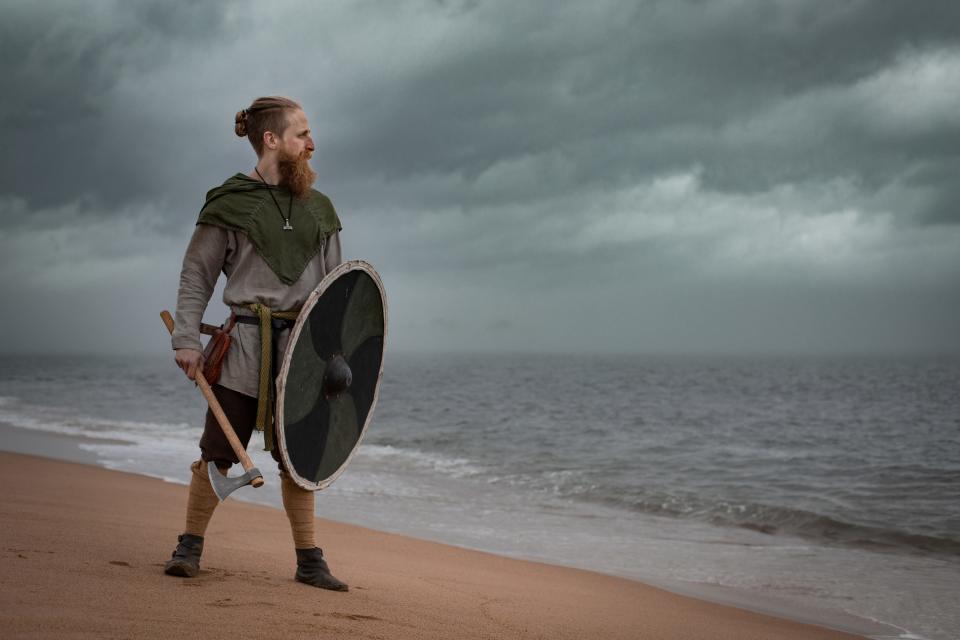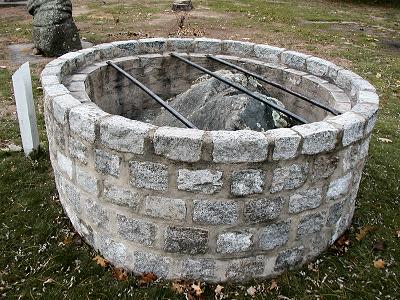The Vikings are coming to Hampton: Re-enactor group to bring culture and customs to life
HAMPTON — Take a trip back in time to the age of the Vikings on Saturday, June 4, from 11 a.m. to 4 p.m. on the grounds of the Tuck Museum, 40 Park Avenue.
The re-enactor group Straumfjordr will bring Viking culture and customs to life with demonstrations about life at home as well as on the battlefield. Special weapons and combat demonstrations will be held at 12 noon and 3 p.m. with Vikings in full armor clad with axes, swords, spears and bows providing insight into battle strategies.
"I particularly enjoy seeing the looks on the faces of children when they watch the Viking demonstrations and tour the encampment,” said Ed Baechtold, a Tuck Museum trustee. “The experience opens up a new and exciting world to them."

While the Vikings are famous for warfare and exploration, the vast majority were farmers and craftspeople engaged in making textiles and jewelry, and woodworking and smithing – with some items on sale at the event.
Scholars agree that the Vikings were the first Europeans to colonize North America. They named their new home Vineland, although where exactly that was no one really knows.
Also on display will be Viking rock, which is part of Tuck Museum’s permanent exhibit. For a century, it was said that the boulder marked the grave of Thorvald, brother of the famous explorer Leif Eriksson. But this proved to be no more than local legend. Today Viking rock is protected by a concrete well with a row of iron bars across the top.
“Every community has their local myths and Hampton is no exception,” said Betty Moore, a Tuck Museum trustee and member of the program committee. “From Thorvald’s Rock on display on the Tuck Museum grounds to our current exhibit on General Jonathan Moulton, who was one on the richest and most maligned citizens of Hampton, these stories pique our interest. The Viking reenactors bring to life in a well-researched manner the life and culture of these early explorers.”
The event is free and open to all.
'Hampton’s Thorvald Rock' by Karen Raynes
Recent interest in Viking legend and lore has been raised by the release of Robert Eggers' movie “The Northman” and locally the return to the Tuck Museum of Hampton History with the living history group Straumfjordr on June 4. They will perform authentic demonstrations with Viking weapons, show how tools are made, prepare meals just like the Viking would have, making clothing and jewelry, showcasing the daily life at a Viking camp.
Also at the Tuck Museum is Thorvald’s Rock. The rock is 600 pounds of glacial stone, perhaps 10,000 years old, with markings in the upper right corner that could be marks from a plow or hand-carved in the rock by a Viking visit to Great Boar’s Head in 1004 ca AD.

So much legend and lore surround the rock. There have been Viking ship and ghost sightings just like the lure and lore of witch Goody Cole in the town. Thorvald’s ghost is said to visit a Hampton resident when the fog on the sea shows an eagle-headed longboat pass by the Boar’s Head.
Briefly, I will try and surmise the stories that have been told about the rock, making no judgment as to its legitimacy. Indeed, the rock does exist, with markings. But was it the burial stone for Thorvald Ericsson who from the Icelandic Sagas, like his brother Lief Ericsson, discovered land on the North American coast long before Columbus “sailed the ocean blue”?
From the Icelandic Sagas, Thorvald explored the North American coast in the year 1004 ca, finding a headland, that historians claim was Great Boar’s Head in Hampton. It was summer and Thorvald walked the coast and from the sagas he is quoted “it is a fair region here, and here I should like to make my home.” The Vikings had a confrontation with the local “Skraeling’s”, Thorvald was mortally wounded and counseled his men to retrace their way North but to bury him with a cross at his head and the other at my feet on the headland. The legend is born but was the described site Hampton’s Great Boar’s Head?
As early as 1670 “Witch’s Rock,” later “Thorvald’s Rock,” is found in a diary by Effie Taylor. The rock on the Boar’s Head was surrounded by superstition and left alone by most citizenry.
Hampton’s historians Joseph and Lucy Dow, when they published “The History of the Town of Hampton New Hampshire” in 1894, did not make any mention of Thorvald’s Rock.
Charles M. Lamprey, a descendant of the original owners of the land where the rock resided at the time, wrote an article in 1902, telling of the stone and probability that it was the burying place of Thorvald. Wallace D. Lovall, the street railway promoter, intended to erect a monument near the Norse Rock and to lay out a park allowing people to view the rock for a price of course.
Interest in the rock continued with Runic expert Olaf Strandvold stating in the 1930s that the markings on the rock were of Norse origin but that it was not a gravestone. So much for Thorvald’s burial place.
The Tricentenary of Hampton in 1938 was approaching and interest in the rock again peaked. Mrs. Virginia Fraser, president of the Historical Preservation Society, who was a summer resident of Thorwald Avenue on Boar’s Head, tried to gain interest in removing the rock from the Boar’s Head site to the Meeting House Green for its protection and better viewing for interested persons. This move would not happen until the rock was in 1989 moved to its present site at the Tuck Museum grounds.
Winnacunnet High School history teacher Harold Fernald gathered his students to participate in an archaeological dig in 1974 at the site of the rock on Boar’s Head. All that was found was a 1973 penny, no man-made objects were found or bones from a 1000-plus-year-old Viking that if it were at the site probably decomposed after 100 years.
Legends and lore are built on stories told and believed from generation to generation. The telling of the story changes along the way. Expects have their say and some just want to believe. Even poets have their say as Henry Wadsworth Longfellow wrote in the poem “The Norsemen”:
“A simple stone, or mound of earth,
Can summon the departed…
Quicken the Past of life again
The Present lose in that hath been,
And in their primal freshness show
The buried forms of long ago.”
Go take a look at Thorvald’s Rock at the Tuck Museum for yourself at any time.
On June 4, from 11 a.m. to 4 p.m., watch the living history group Straumfjordr portray the culture and combat of Viking-age Scandinavia on the Meeting House Green at the Tuck Museum. The event is free and open to all.
This article originally appeared on Portsmouth Herald: The Vikings are coming to Hampton's Tuck Museum

